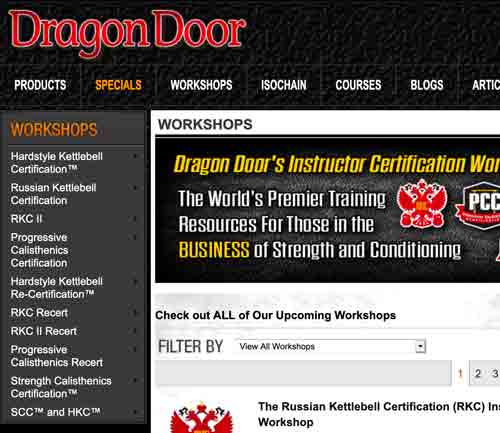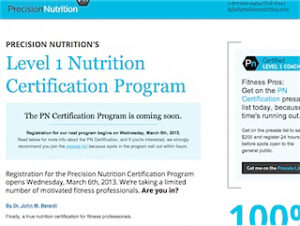
This article is an excerpt from the book: The Flexible Periodization Method. Enjoy.
How do I know that these are the Top 5 Mistakes? I know that these are the Top 5 Mistakes, because I and many other trainers and coaches I have conferred with have made them! Mistakes are a natural part of learning and only count as true mistakes if you keep repeating them.
Legendary Danish physicist, Niels Bohr, was known for saying that “an expert is someone who has made all the mistakes that can be made in a narrow scope of practice“.
I will assume that you are currently creating your long-term training plan based on some form of periodization model (linear, non-linear, conjugate, block etc). If you are ahead of your game, you might even have my book “The Flexible Periodization Method”.
(Not everyone is comfortable with “periodization” and find the concept to be confusing and too theoretical. If this describes you, I recommend that you initially focus on the most basic definition of periodization -“a division into periods“.)
Programmes that follow the principles of periodization have been proven to yield better results than programs that do not follow principles of periodization (Study “Designing Resistance Training Programs“, by Fleck and Kraemer to learn more).
If you are not basing your long-term training programs on a clear, effective periodization model, then that is ‘the mistake of all mistakes!” Let’s dive into it!
Mistake #1
Creating a great training program with the wrong goals. Just because there is jumping in a sport does not mean that the athlete should perform jump training, if jumping ability is not the weak link for that athlete!!!
The Mantra is: Spend the time focusing on the components of training that will affect the athlete the most – whatever that is.
A great macrocycle plan is based on asking the athlete and or coach about the weak link in training or competition. I have written elsewhere about the 7 categories of weak links, but here they are listed for your convenience
- Increased daily energy or vitality
- Prevent repeated injuries and/or rehabilitate an injury.
- Improve the ability to perform a high amount of sport specific practice with high quality .
- Improve the ability to repeat current peak performance in selected elements of the performance or game.
- Improve peak performance in selected elements of the performance or game.
- Improve performance in prolonged or repeated competitions.
- Change body composition
Mistake #2
Not enough time assigned to each mesocycle. Would an athlete improve muscle mass after one training session geared towards improving
muscle mass? Obviously not!
What ever physical capacity the athlete is aiming to improve, the training program to address this particular capacity must be trained for a sufficient number of weeks so that useful training adaptations are created.
The sufficient number of training weeks ranges from 3 to 12 depending on the capacity to be improved, how strongly that capacity is emphasized in the program and the training age of the athlete or client.
Mistake #3
Effects of each modality of training (strength, plyometric and energy systems) are uncoordinated and the program aims for too many different goals in the same microcycles.
If you have more than one main modality of training in your program in any given microcycle, you must consider the influence of each modality of training on the other (Wladimir Issurin writes extensively about this in “Block Periodization“).
The key factor that negatively influences a training modality is fatigue from training another training modality. Try having an athlete squat heavy after a 5 km run. He/she may be able to complete the workout but results will not be optimal!
The best results are created when each modality is trained in such a way that the training adaptations are similar and/or mutually enhance each other.
It is important not to use strength and conditioning to improve physical capacities that are developed through the sport specific practice. One of the first things I learned from one of my mentors was how his volleyball players’ (national elite level) relative VO2max values where close to 70 even though they where never running! They achieved this through their almost daily 2-hour volleyball practices.
Mistake #4
Giving the athlete or client exercises that you “like” instead of the exercises the athlete needs.
Here is one of the biggest secrets to becoming a great strength coach or personal trainer.
Stop “liking” any exercises!!
Exercise selection made in programs for your athletes or clients must only be based on
- A biomechanical analysis of what the athlete/client needs in relation to their sport/ activity .
- Specific experiences with what exercises work for that athlete/client.
If two exercises are equally effective for the athlete and (s)he likes one, give him or her the one she likes and the results will be better!
The athlete has the “luxury” of liking an exercise – you don’t!
Mistake #5
Applying random instead of systematic variation to the training program.
More than once, I have heard trainers say that they “like to mix it up” (i.e the program). Sometimes they will say that this “mixing it up” is important to motivate the client.
Each exercise should be used for the appropriate number of training sessions (enough to yield practical significant progress). Then the next presented exercise should be selected carefully to build upon the first. Most often, but not always, each new exercise should allow for gradually more load to be used by the athlete.
Example: You might progress from Dumbbell Bench Press to Barbell Bench Press, but not the other way around. (As a side note, working with the dumbbell variation in the initial training phase allows you to discover and help the athlete correct any possible left-right imbalances.)
Now you know “The Top 5 Mistakes to Avoid When You Create a Long Term Training Program“. Avoid these mistakes and your long-term training programs will be significantly more effective!











0 Comments